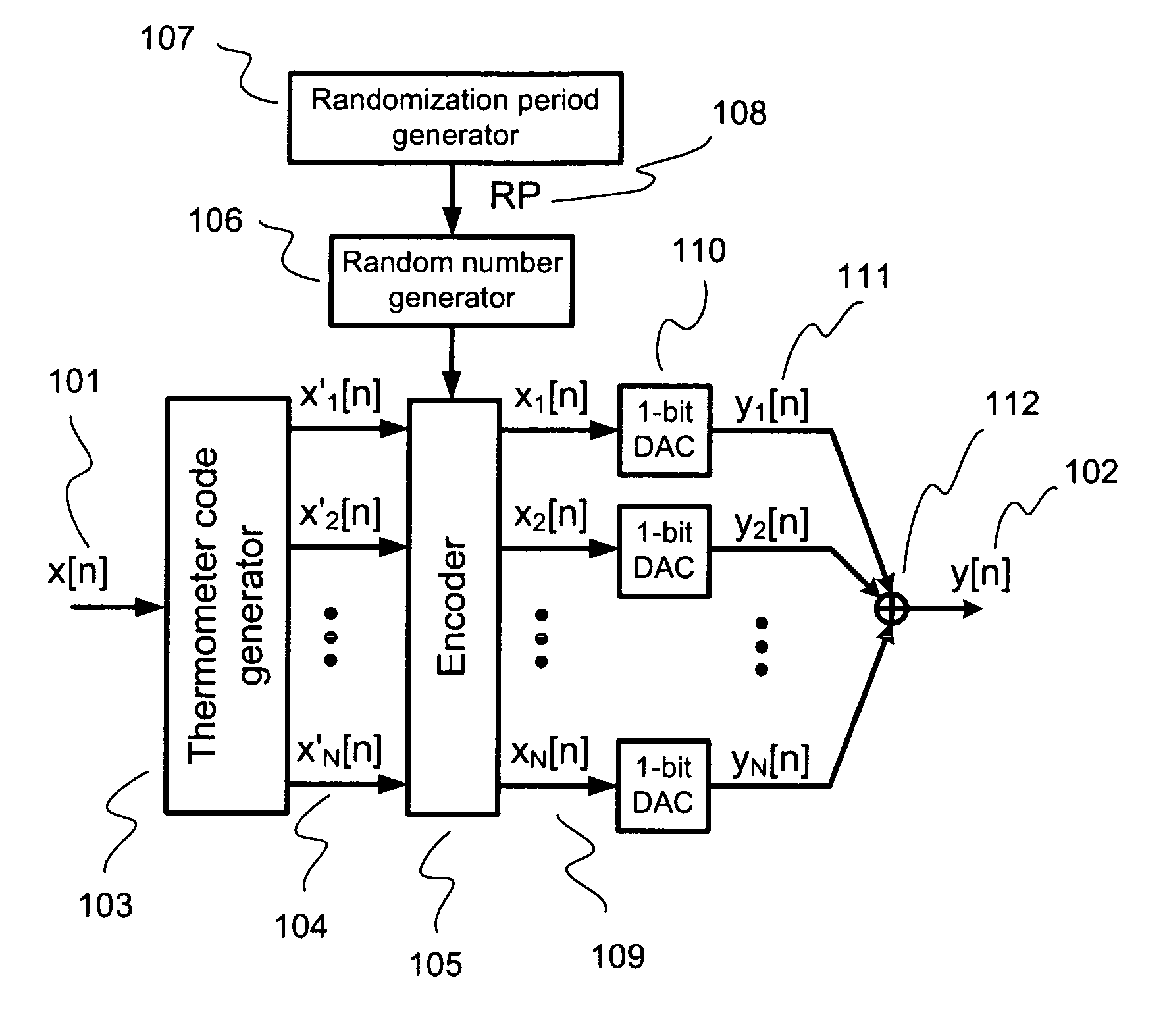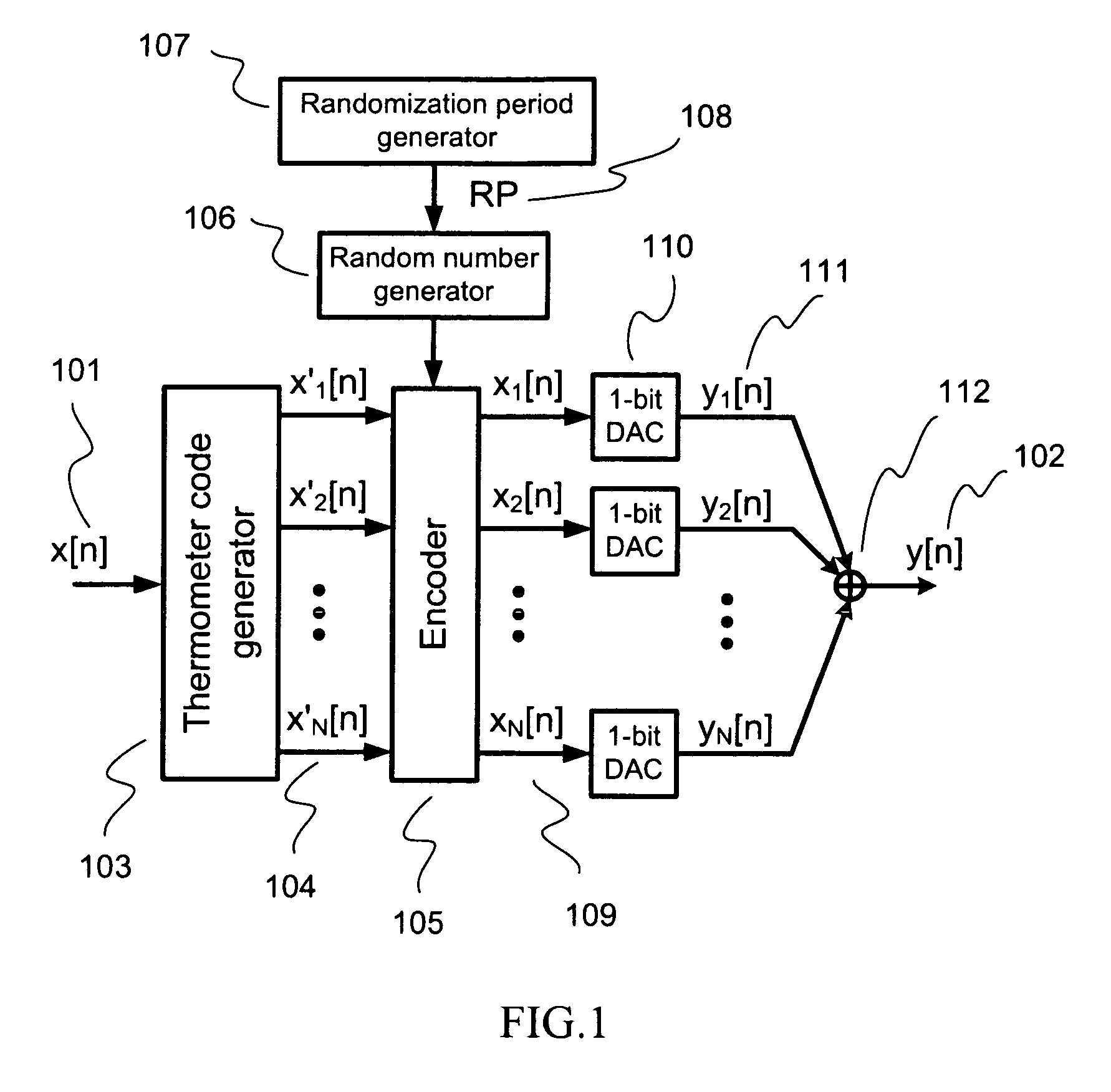Randomized thermometer-coding digital-to-analog converter and method therefor
a digital-to-analog converter and thermometer-coding technology, applied in the field of digital-to-analog converters, can solve the problems of large possible maximum output error of randomization, large maximum output error of spurious-free dynamic range (sfdr), and high maximum output error, so as to reduce the errors of analog output and enhance spectral purity
- Summary
- Abstract
- Description
- Claims
- Application Information
AI Technical Summary
Benefits of technology
Problems solved by technology
Method used
Image
Examples
Embodiment Construction
[0011]An example of an M-bit DAC block diagram of the present invention is shown in FIG. 1, wherein a digital input signal 101 is provided and an analog output signal 102 is produced. The M-bit digital input signal x[n]101 is applied to a thermometer code generator 103. The thermometer code generator 103 translates the M-bit digital input signal x[n]101 to be an N-level thermometer code {x′1[n], x′2[n], . . . , x′N[n]} 104 that is fed into an encoder 105.
[0012]It is obvious that the thermometer code generator 103 can be removed when the input has been the N-level thermometer code {x′1[n], x′2[n], . . . , x′N[n]} 104. The encoder 105, such as a barrel shifter, barrel shifts the N-level thermometer code {x′1[n], x′2[n], . . . , x′N[n]} 104 to a specific starting position.
[0013]A random number generator 106 generates a random number and sends the random number to the encoder to decide the specific starting position.
[0014]A randomization period generator 107 produces a randomization per...
PUM
 Login to View More
Login to View More Abstract
Description
Claims
Application Information
 Login to View More
Login to View More - R&D
- Intellectual Property
- Life Sciences
- Materials
- Tech Scout
- Unparalleled Data Quality
- Higher Quality Content
- 60% Fewer Hallucinations
Browse by: Latest US Patents, China's latest patents, Technical Efficacy Thesaurus, Application Domain, Technology Topic, Popular Technical Reports.
© 2025 PatSnap. All rights reserved.Legal|Privacy policy|Modern Slavery Act Transparency Statement|Sitemap|About US| Contact US: help@patsnap.com



